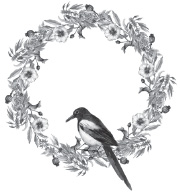
HERBS FOR LOVE, FERTILITY, AND ABUNDANCE
Many of our favorite herbs and flowers have the magical power to increase love and abundance in our lives. They help us attract or keep love, divine who our future love will be, enhance our personal magnetism, and, by their mere presence and beauty, increase the amount of love that surrounds us daily. They also encourage fertility, attract customers, help us to find wealth, and make our fondest wishes come true. Wear them or their scented oils on your person, hide them under your pillow, or eat them in wonderful herbal concoctions and watch your life’s riches grow.
Apple
(Pyrus malus)
Aphrodite, the Greek Goddess of Love, was associated with Apples. To this day Apple blossom perfume is used as a magical oil to attract a lover, and Apple wood is favored for wands to use in love magic. You can place the dried peels in a sachet and wear it to attract a lover or anoint candles with apple blossom oil when doing love magic rituals. To know if your love is returned, hold an apple until it is warm and then hand it to your beloved. If they take a bite you will know they are yours!
For more on the lore, history, uses, and Beltaine practices of Apple, see here.
Buttercup
(Ranunculus acris, Ranunculus bulbosus, Ranunculus sceleratus)
According to legend the Fairies are responsible for the creation of Buttercups. Once a troop of Fairies saw a miser walking across a field carrying a big sack of gold. They begged him for alms, but the miser refused and walked on. Unbeknown to him, before he took a step the Fairies had cut open the sack using a blade of grass, and as he moved across the field his coins dropped one by one onto the grass. Buttercups appeared wherever the golden coins touched the ground.1
In Ireland farmers would rub Buttercups onto their cow’s teats on May Day as a form of sympathetic magic. The yellow of the flowers echoed the yellow of the Beltaine sun and was supposed to bring a greater milk yield and lots of yellow butter (Buttercups are actually poisonous to cattle if eaten fresh). For this reason Buttercups are flowers of joy, prosperity, and abundance.2
In Scottish tradition a person can wear a bag or amulet filled with Buttercups to allay madness.
Although Buttercups can be used medicinally, many are generally acrid and irritating to tissue (one of the names for Ranunculus acris is “Blister Weed,” which should tell you something), so the best way to use them safely is in homeopathic (very dilute) doses. Homeopathic Ranunculus bulbosus (Bulbous Buttercup) is taken for rheumatic complaints, skin conditions, and nervous affections. Some homeopathic keynotes*62 of this remedy are as follows:
Intellectual rigidity with anxiety for one’s health and fear of ghosts
Alcoholism
Everything is worse in cold wet weather
Rheumatic or neuralgic headache
Photophobia with herpes around the eyes
Hay fever
Herpetic eruptions on the face
Spasmodic hiccup after alcoholic drinks
Pain in the abdomen
Pleurisy
Herpes zoster
Pain along the left scapula extending to chest
Rheumatic pain between shoulder blades that is worse for sitting, writing, and sewing3
CAUTION: Ranunculus bulbosus as an herb is very irritating to the lining of the urinary and digestive tracts, causing stomach pain and diarrhea. When applied directly to the skin it can cause skin blisters and burns. Pregnant and breastfeeding women should avoid this plant.4
If handled, Ranunculus acris can cause skin blistering, and if eaten, excessive salivation, nausea, colic, bloody diarrhea, difficulty breathing, convulsions, and paralysis. However, once dried the plant is harmless and won’t affect an animal eating it. Pregnant and breastfeeding women should probably avoid it.5
I do remember picking Buttercups as a child and holding them under my chin to “see if I like butter.” I did not experience any blisters or harm from the plant!
Buttercup at Beltaine
Honor the sun by hanging bunches of the yellow flowers on the May Bush and use them to decorate the outside of the house and holy wells.
Clover, White Clover (Trifolium repens),
Red Clover (Trifolium pratense)
Clover is an effective herb in the romantic and financial realms. If you carry a Clover on your person you will attract new love, and if you find one with two leaves an old love will come back to you. Dreaming of Clover means you will have a happy marriage. Following is a traditional love divination using Clover.
A clover, a clover of two, [a Clover with two leaves]
Put it in your right shoe,
The first young man (or woman) you meet,
In field, lane or street,
You shall have him (her) or one of his name.
FROM CAMBRIDGESHIRE, NORFOLK, AND SUFFOLK, 1852
Discovering a five-leaf Clover means money will soon be arriving, and putting Red Clover blossoms into your bath water will ensure a successful financial transaction.
For more on the lore, history, uses, and Beltaine practices of Clover, see here.
Fava Beans, Mojo Beans (Vicia faba)
Fava Beans (also called Saint Joseph Beans, Mojo Beans, African Wishing Beans, or Broad Beans) are said to attract abundance, fertility, and love and to make your wishes come true. They are called Saint Joseph Beans because they once saved the Sicilian people from famine through the Saint’s intercession, showing their ability to provide sustenance. Put Mojo Beans in a green flannel bag and carry it in your pocket to attract money. If you need to sell your house, put the Beans at each corner of the entranceway.
Following is a little spell using Mojo Beans.
Start by making three, five or seven wishes and for each of them put one bean in your pockets and leave them there for a week. Before the sun rises on the seventh day, go to river or stream and say each of your wishes in the name of the father, son and Holy Spirit as you throw them into the water over your back and go away without looking back. Then your wishes shall become true in a week.6
Make a glorious springtime minestrone soup that incorporates wish-fulfilling Fava Beans. Kitchen Witches can chant their intent over the cauldron as they prepare this magical dish. For example, visualizing a golden rain of coins while singing:
Golden shower, magick is done,
wealth come to me, harming none.
Or:
Love I desire, come to me,
as is my will, so mote it be!
A loftier and more universal chant might be:
May all Beings be fed.
May all Beings be happy.
 Springtime Minestrone Soup*63
Springtime Minestrone Soup*63
Makes 2 to 4 servings
1 large bunch of organic fresh parsley
12 to 15 spears of fresh organic asparagus
1 large organic carrot
Vinegar (or sea salt)
1 organic lemon
3 cloves organic garlic, peeled and finely sliced
2 stalks organic celery, diced
1 organic yellow onion, peeled and diced
½ pound fresh organic fava beans
Cold-pressed virgin olive oil
Sea salt
Organic black pepper
3 tablespoons organic vegetable demi-glace (demi-glace is a thick, dark sauce made by combining half brown stock and half brown sauce [called espagnole] and then reducing that by half [demi means “half”]
1 15-ounce can diced organic tomatoes
4 cups of water
2¼ cups ditalini pasta
⅓ cup real Italian parmesan cheese, grated
Soak the parsley, asparagus, and carrot in water with a little vinegar or sea salt added for 20 minutes, then rinse well.
Remove the stems from the parsley then chop the leaves coarsely.
Break off and discard the woody ends of the asparagus, then slice into angular pieces.
Peel and dice the carrot.
Wash the lemon in hot soapy water then rinse. Grate the lemon until you have 2 teaspoons of zest and set aside. Cut the lemon into four wedges.
In a medium pot boil the fava beans in hot water, then cool them with cold water and drain. Then, using a sharp knife, slice through each fava bean and remove the skin (popping out each bean). Set aside.
Put 2 teaspoons of olive oil in another pot and heat on medium until hot. Add the garlic, carrot, celery, onion, and a pinch of sea salt and black pepper into the hot oil. Cook until the vegetables are soft (about 4 minutes, more or less), stirring from time to time with a wooden spoon. Add in the vegetable demi-glace, lemon zest, diced tomatoes, and 4 cups of water. Bring to a boil, then reduce heat to medium and simmer about 5 minutes.
Fill a third pot with water, bring to a boil, and cook the pasta for 10 minutes (al dente) and strain. (You will add the pasta at the end so it doesn’t get soggy.)
Put the slices of asparagus and half of the parsley and parmesan cheese into the pot with the vegetables. Season to taste with more sea salt and black pepper. Cook for 2 minutes, or until the asparagus is bright green. Add the juice of 2 lemon wedges. Fold in the cooked pasta if serving immediately. (If you will be refrigerating the leftovers, keep the pasta in a separate container and add it in as needed, so it doesn’t get mushy.)
Pour the soup into bowls. Add fava beans to each bowl and stir them in. Garnish with the rest of the parsley and parmesan and lemon wedges. Serve with warm, crusty whole-grain bread.
Fava Beans at Beltaine
Make a dish with Fava beans (Broad beans) to increase prosperity and serve it at your Beltaine feast.
Ferns
(Pteridophytes)
In Estonia, Lithuania, and Latvia people go out on Saint John’s Eve, the night of June 23, to seek the mystical Fern flower. Those who find it are said to become rich, happy, and able to find hidden treasure or gain the ability to understand animal speech. Couples sneak off to the forest to seek the mysterious flower (which is likely just an excuse to make love in the wild woods).
In Russia, Ukraine, Belarus, and Poland a similar quest takes place on the eve of Kupala Night (June 23–24). Young women wear wreaths in their hair, and couples go into the woods searching for the magical Fern flower. When they emerge from the woods if the man is wearing the girl’s wreath it means the couple is engaged to be married. In Sweden the Fern flower is said to be found only at midnight on Midsummer’s Eve, and even then it is protected by magic and very hard to find. These observances have deep Pagan roots. Ferns, of course, don’t have flowers.
See here for more on the lore, history, uses, and Beltaine practices of Ferns.
Lemon Balm
(Melissa officinalis)
The Latin name for Lemon Balm comes to us from the ancient Greek word mélissa, meaning “honeybee,” owing to the abundance of nectar in the flowers, and the Melissae were priestesses of the Great Mother Goddesses (Rhea or Cybele) or the Goddesses of Earth and Nature (Demeter, Persephone, and especially Artemis). These Goddesses were all deities of fertility. The honeybee was said to be a form the human soul took when descending to Earth from the Goddess Artemis herself.7
Interestingly, Lemon Balm is a great favorite of the bees, so much so that you can rub it on a bee hive to bring back wandering bees or attract more bees to the hive or rub it on a new hive so the bees will settle in. When fed to cows Lemon Balm increases their milk production. It is an herb of abundance, happiness, and prosperity.8
The seventeenth-century herbalist and astrologer Nicholas Culpeper thought Lemon Balm to be a valuable remedy for melancholy: “It causeth the mind and heart to become merry . . . and driveth away all troublesome cares and thoughts.”9
Use it in love potions to increase your personal magnetism or as a tea or in a bath to calm yourself before leading a ritual or any other stressful activity. You can also add it to herbal pillows to bring sweet dreams.
Kitchen Witches can sneak Lemon Balm into a variety of foods. Following are a couple examples.
 Lemon Balm and Juniper Cookies*64
Lemon Balm and Juniper Cookies*64
1 cup organic butter
1 cup raw organic cane sugar
2 cage-free organic eggs
1 tablespoon organic lemon zest
2 tablespoons organic lemon juice
⅓ cup fresh lemon balm leaves (or 1/6 cup crushed dry organic lemon balm), minced
1 teaspoon sea salt
4 cups organic flour
1 teaspoon nonaluminum baking soda
¼ cup juniper berry sugar†65
Preheat the oven to 350°F.
Cream the butter and sugar. Add the eggs, lemon juice, lemon zest, lemon balm, and sea salt. Mix well.
Add 1 cup of flour, then mix in the baking soda. Add the rest of the flour, a bit at a time until you have a stiff dough. Roll the dough into two balls and refrigerate for at least an hour.
Using a rolling pin or a glass bottle, roll each dough ball until it is ¼ inch thick. Use a glass or cookie cutter to cut out shapes. Sprinkle juniper berry sugar on each cookie. Bake 8 to 10 minutes.
 Carmelite Water, Eau de Mélisse*66
Carmelite Water, Eau de Mélisse*66
This is an herbal panacea dating from at least 1379 that was once made in abbey apothecaries.
½ cup fresh lemon balm leaves (or ¼ cup dried organic lemon balm)
¼ cup dry organic angelica root
1 tablespoon organic coriander seed
1 tablespoon organic lemon zest
1 teaspoon organic cinnamon
2 organic cloves
⅛ teaspoon grated nutmeg
1 bottle dry white wine
Place the herbs and spices into a large glass jar. Pour in the wine. Cap and shake. Steep for 6 hours, then strain through a cheesecloth or a coffee filter until clear. Chill the spiced wine for several hours and drink within 5 days.
“Balm” is an apt name for this plant that is soothing to the nerves and helps with depression, insomnia, anxiety, ADHD, hysteria, and emotional issues associated with menstruation.
A mother with a colicky baby can take the tea and deliver its calming properties to her baby via her breast milk. Cramps, upset stomach and gas, and rapid heartbeat due to nervousness as well as asthma and bronchial conditions are helped by this herb. It also has fever reducing properties.
Take it as tea or add it to the bath water to help with menstrual discomfort and use the tea (short term and only as needed) during pregnancy for headaches and vertigo. The leaves can be used to poultice cold sores, wounds, and bites.
Pick the herb just as it comes into flower and slightly after. Fresh is best, but you can also freeze it for later use. To make the tea: Use 2 teaspoons of crushed leaves per cup of freshly boiled water. Infuse for 20 minutes and drink ¼ cup, four times a day.
Tincture the leaves for use in the winter (see here for instructions). Take 1 teaspoon three to four times a day.10
CAUTION: Lemon Balm is generally safe when used in food amounts, but some people may experience increased appetite, nausea, abdominal pain, dizziness, and wheezing. Contact dermatitis has happened with some individuals. Babies and children can take it safely for up to a month. Diabetics should use caution as it can lower blood sugar levels. Stop using it 2 weeks before surgery as it can react with anesthesia medications. Anyone with thyroid disease should avoid it as it may reduce thyroid hormone levels and interfere with thyroid hormone-replacement therapy. Combining it with sedatives could cause drowsiness.11
Lemon Balm at Beltaine
Soak in a bath with Lemon Balm tea or flowers before your Beltaine rite. Serve Lemon Balm tea at the feast or use it in the ritual cup to honor Goddesses and to bring in prosperity and happiness.
Mandrake
(Mandragora officinarum)
Mandrake is an ancient fertility aid that is said to bring love and fecundity to barren women, and it has actually been found to contain small quantities of human hormones. Sephardic women once tied Mandrake fruits to their body to bring fertility, while Samaritan women placed them under their bed.
Even the Bible asserts that Mandrake promotes conception. In the Old Testament, when Reuben finds Mandrakes in a field, he brings them to his mother Leah, who is co-wife with Rachel, as a charm to renew her fertility and attractiveness to their husband Jacob.
When Jacob came out from the field in the evening, Leah went out to meet him and said, “You must come in to me, for I have hired you with my son’s mandrakes.” So he lay with her that night. And God listened to Leah, and she conceived and bore Jacob a fifth son.12
The Bible also associates Mandrakes with the bridegroom’s admiration for his beloved.
Let us go early to the vineyards to see if the vine has budded, if the blossom has opened, if the pomegranates are in bloom—there I will give you my love. The mandrakes send forth a fragrance, and at our door is every delicacy, new as well as old, that I have treasured up for you, my beloved.13
Wear Mandrake as an amulet, infuse it into magical oils, tincture it into lust and love potions, or simply place it under the bed. It can also be used to bring prosperity into your life. Wrap the Mandrake root in dollar bills and hold it in your hand, saying:
Money, money, so much I see,
Mandragora work for me.
For more on the lore, history, uses, and Beltaine practices of Mandrake, see here.
Mistletoe, All-Heal, Bird Lime, Golden Bough, Holy Wood
(Viscum album)
Mistletoe can be used attract a lover: Burn Mistletoe to ash. Write your name on a parchment and sprinkle the ash upon it. Fold each corner to the center, then fold the paper in half. Tie the folded-up paper with a red ribbon and wear it around your neck for 1 month.14
See here for more on the lore, history, uses, and Beltaine practices of Mistletoe.
Rose
(Rosa spp.)
Roses are the quintessential flower of love and devotion. According to Greek legend, they were created by the Goddess Chloris/Flora, when she came upon a lifeless nymph in the forest and transformed her into a flower. To do this she appealed to Venus/Aphrodite, Goddess of Love, and to Dionysus, God of Wine. Venus/Aphrodite gave the flower divine beauty, and Dionysus gave it a sweet fragrance. Zephyrus, God of the West Wind, blew away the clouds so that Apollo, the Sun God, could shine upon the flower and make it bloom. To this day Roses are sacred to Venus/Aphrodite and Chloris/Flora as well as Adonis, Eros (God of Love), and the Virgin Mary.
Greek tradition also tells us that when Venus/Aphrodite was born from the sea foam, white Roses appeared around her, and when her lover Adonis died, Aphrodite’s tears mingled with his blood to create red Roses.
The term sub-rosa is used to indicate a secret. The origins of this saying come from when Venus/Aphrodite gave a Rose to her son Eros, and he passed the Rose on to Harpocrates, the God of Silence, so that his mother’s indiscretions and those of the other Gods would be kept secret.
The Roman poet Ovid wrote about Roses in his Fasti, a six-book Latin poem published in 8 CE, in which he describes the origins of the Roman festivals.
Ye common wenches, celebrate the divinity of Venus: Venus favours the earnings of ladies of a liberal profession. Offer incense and pray for beauty and popular favour; pray to be charming and witty; give to the Queen her own myrtle and the mint she loves, and bands or rushes hid in clustered roses.15
He also tells of his own communication with the deities. In the following case, he is addressing Flora/Chloris.
“Come, Mother of Flowers, that we may honour thee with merry games. . . . Tell me thyself who thou art; the opinion of men is fallacious; thou wilt be the best voucher of thine own name. . . .” So I spoke, and the goddess answered my question thus, and while she spoke, her lips breathed vernal roses: “I who now am called Flora was formerly Chloris. . . .
“But why is it that whereas white robes are given out at the festival of Ceres, Flora is neatly clad in attire of many colours? Is it because the harvest whitens when the ears are ripe, but flowers are of every hue and every shape?” She nodded assent and at the motion of her tresses the flowers dropped down, as falls the rose cast by a hand upon a table.16
Roses feature in love spells and divinations. Following is a Rose charm from Somerset, England. Go to a churchyard under the moonlight and scatter Rose petals. At the stroke of midnight say:
Rose leaves, Rose, leaves,
Rose leaves I strew,
S/he that will love me,
Come after me now.
A vision of your future lover will appear behind you.
To dream of red Roses means you will be lucky in love. Put red Rose buds into a red flannel bag and soak it in your bath to attract a lover. Anoint a red (for passion) or pink (for love) candle with Rose oil, inscribe it with your need, and burn it as you ask Venus/Aphrodite to bring you what you desire. To attract good luck, throw a few Rose buds into the fire; however it is bad luck to scatter petals from a Rose you have worn.17 White Roses blooming out of season are a bad omen.
Roses can do more for us than attract love; they have a number of medicinal applications as well. First, always be sure you are working with good-quality, old-fashioned Roses. You will know them by their sweet, dense perfume. Too many varieties are genetically altered now for appearance and ease of shipping, and they have no scent! Fragrant red Roses are the most desirable for herbal healing purposes. Harvest the petals just as the flower starts to open.
Rose hips actually have more vitamin C than lemons and are simmered to ease sore throats, coughs, and colds. Use only the outer skin, because the inside of the hip contains hairs that could irritate a cough. I have learned that one strong cup of hot Rose hip tea with a bit of honey and lemon will stop a sore throat in its tracks if taken at the first sign of illness. To make the tea: Simmer 2 teaspoons of the outer skin of the hips per cup of water for about 20 minutes.
Rose hips are also very protective of the heart and when taken over a period of 3 to 4 months have been shown to benefit osteoarthritic pain. Make an infusion of fresh or dried red Rose petals to treat headaches and act as a blood cleanser a heart and nerve tonic. To make the infusion: Steep 2 teaspoons of fragrant petals per cup of freshly boiled water for 20 minutes.
You can also simmer red Roses in red wine to make a remedy for menstrual cramps and for exhaustion. Apply the cooled Rose wine as a compress to the forehead to ease headaches and drop it (warmed) into a sore ear.
Rose vinegar can be used as a compress for headaches, a wash for itchy skin conditions and insect bites, a hair rinse or bath additive, and a salad dressing. To make the vinegar: Bring organic red wine vinegar just to a simmer, then pour it into a jar half filled with fragrant fresh red Rose petals until the vinegar reaches the top (be sure to use non-GMO old-fashioned red Rose varieties that have a deep rose fragrance). Cap with a plastic cap or a layer of plastic wrap and a metal cap on top of that (because vinegar corrodes metal). Leave it in a dark place for a few weeks, then strain.
Rose honey is effective for sore throats. Simply fill a jar with fragrant red Rose petals, cover them with a light honey, let stand for 2 weeks (add in more petals if the flowers settle too much), then strain. Or you can grind the fresh petals or hips with a little boiling water, then add them to raw local honey. Simmer lightly for a few minutes, then strain.
For external use, the wood and leaves are simmered to make a fomentation for erysipelas (Strep infection of the skin).
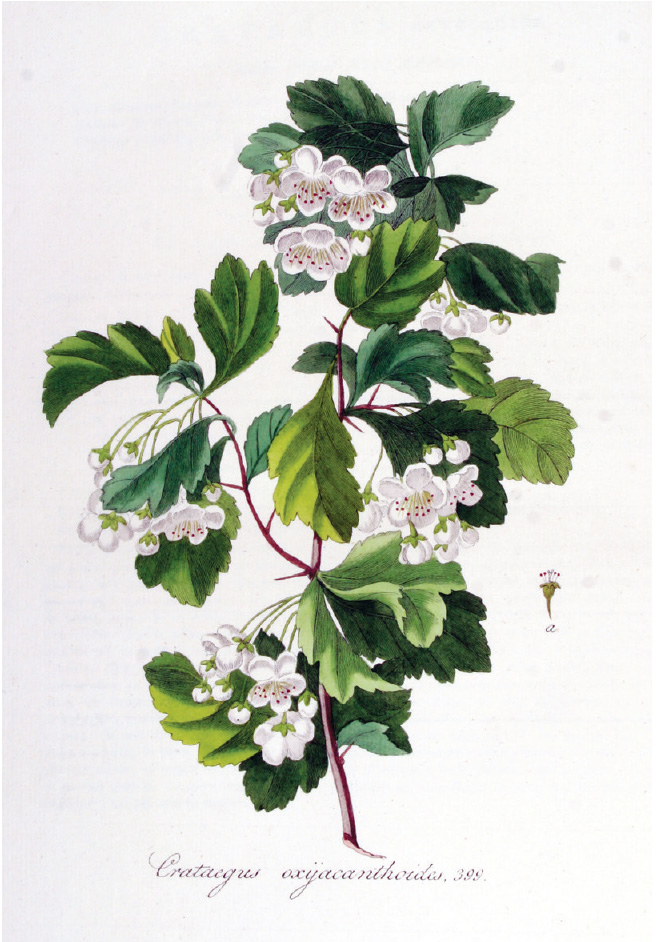
Plate 25. Hawthorn (Crataegus spp.)
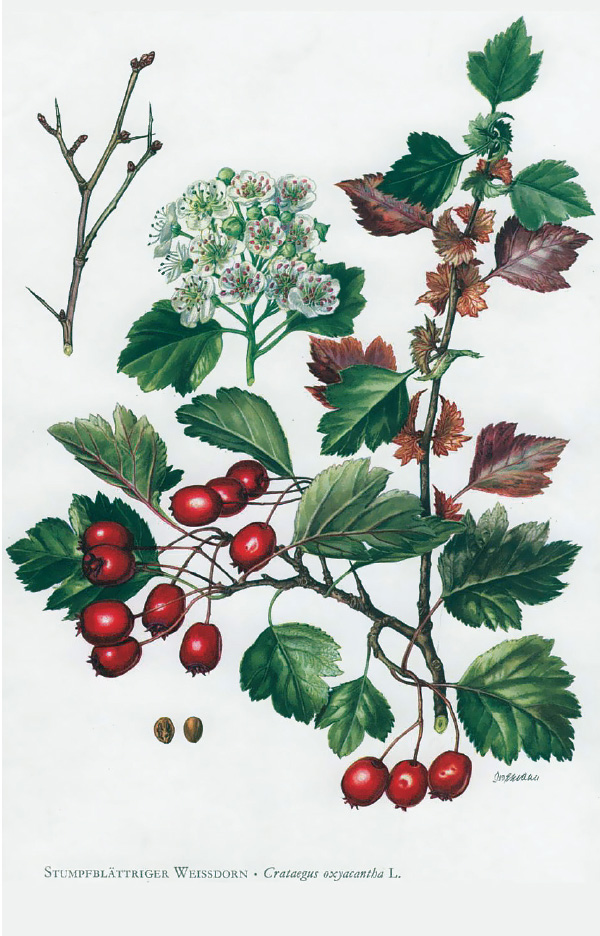
Plate 26. Hawthorn (Crataegus spp.)
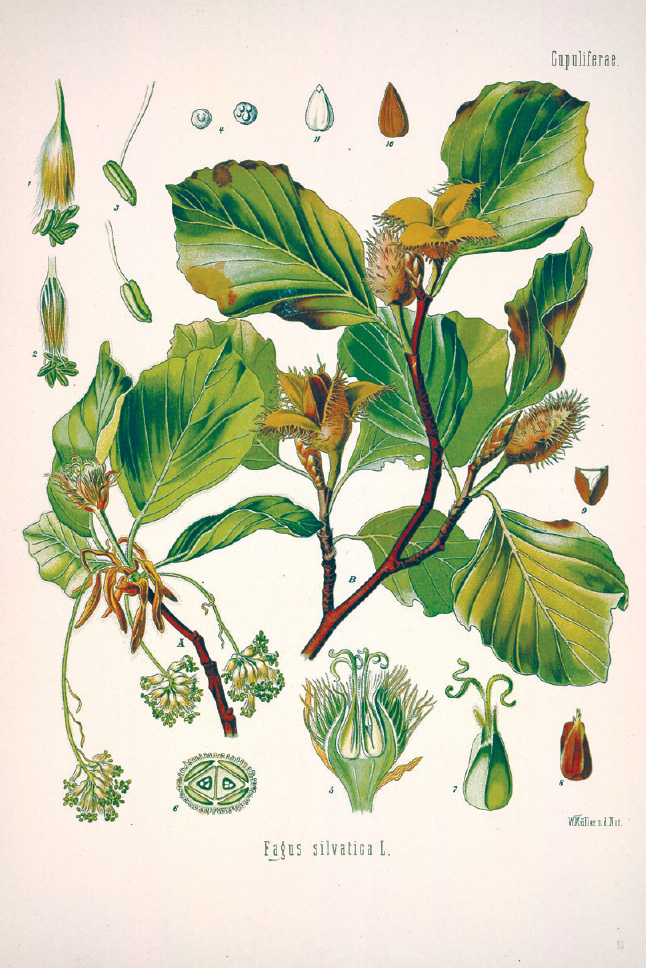
Plate 27. Hazel (Corylus avellana)
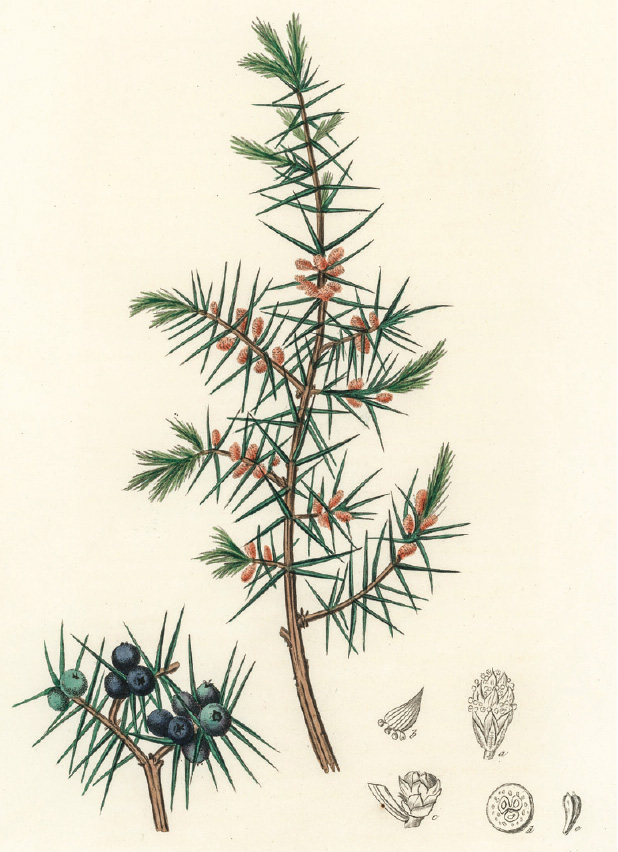
Plate 28. Juniper (Juniperus communis)
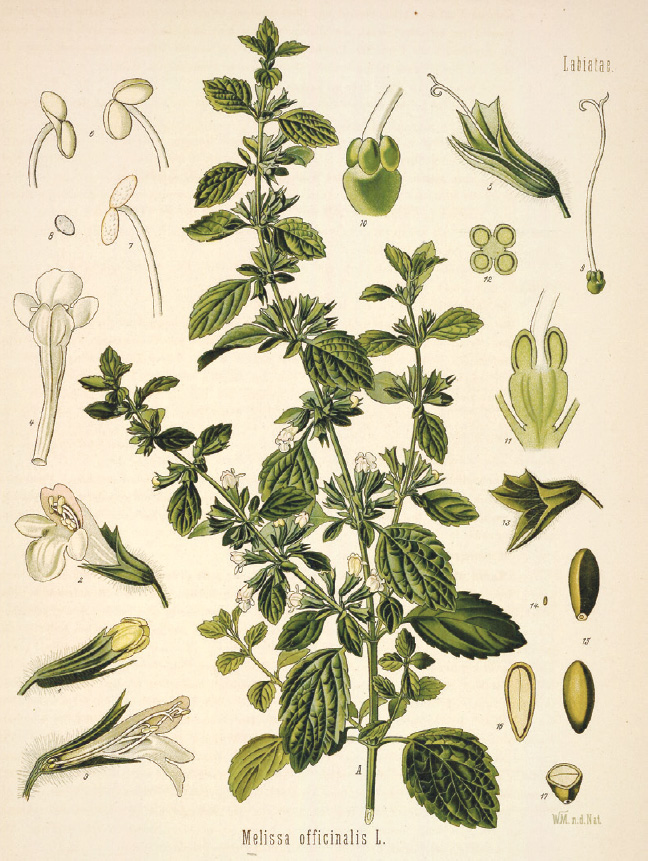
Plate 29. Lemon Balm (Melissa officinalis)
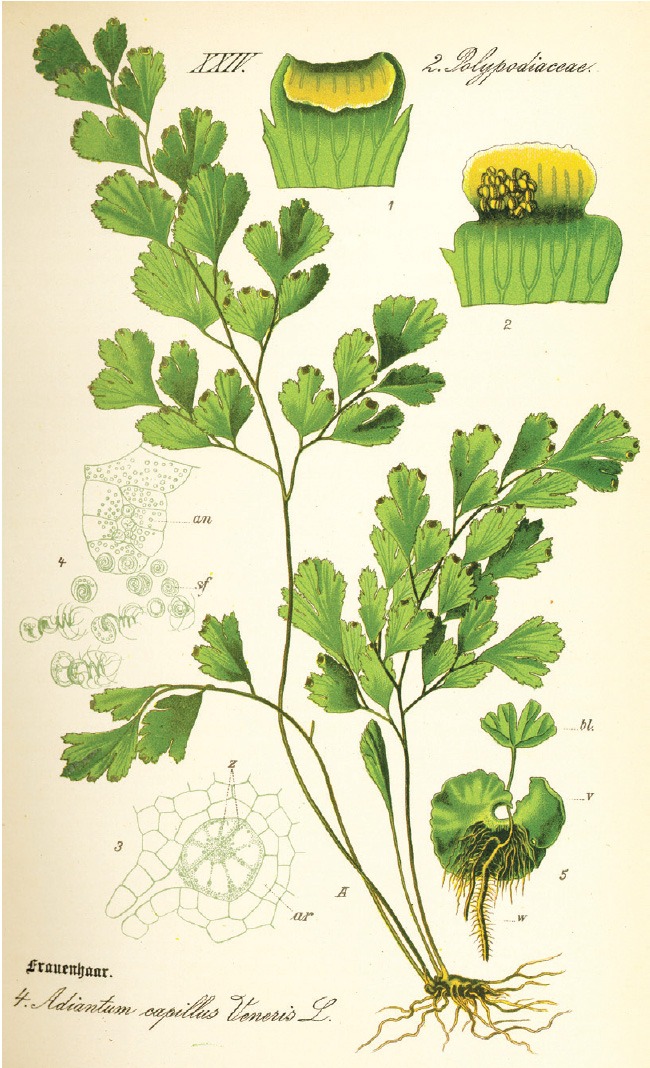
Plate 30. Maidenhair Fern (Adiantum capillus-veneris)
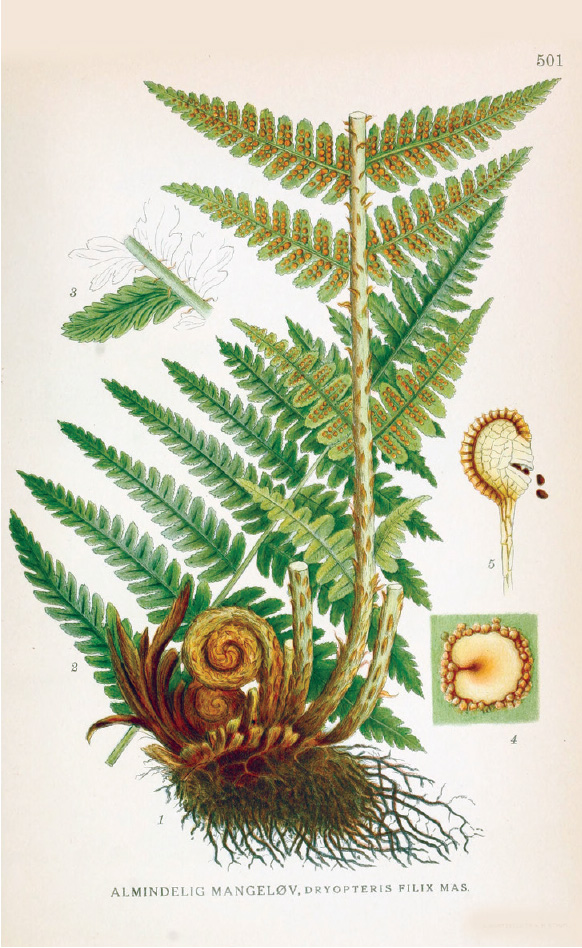
Plate 31. Male Fern (Dryopteris filix-mas)
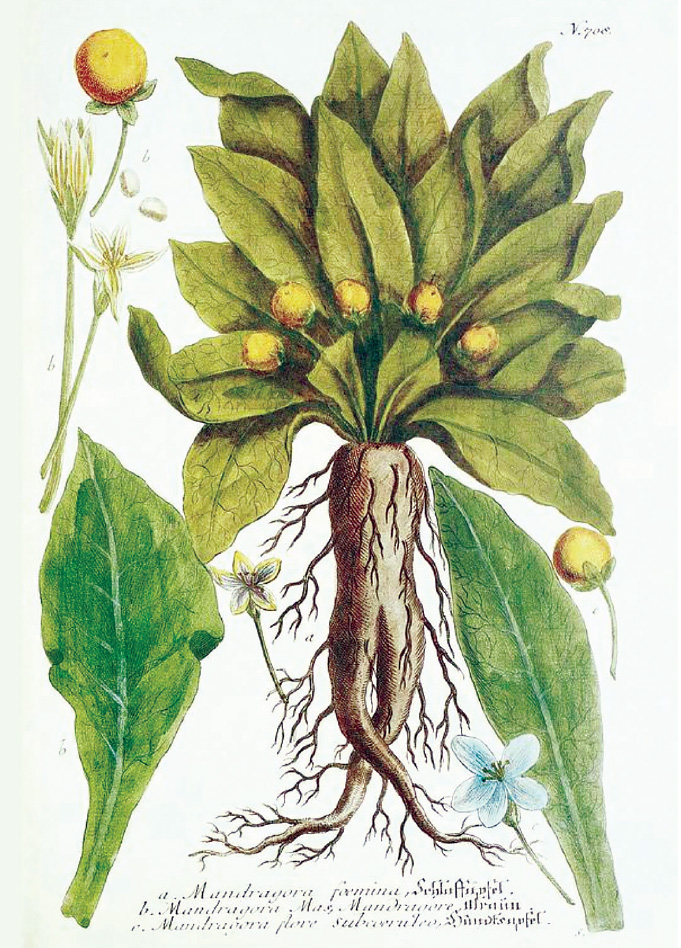
Plate 32. Mandrake (Mandragora officinarum)
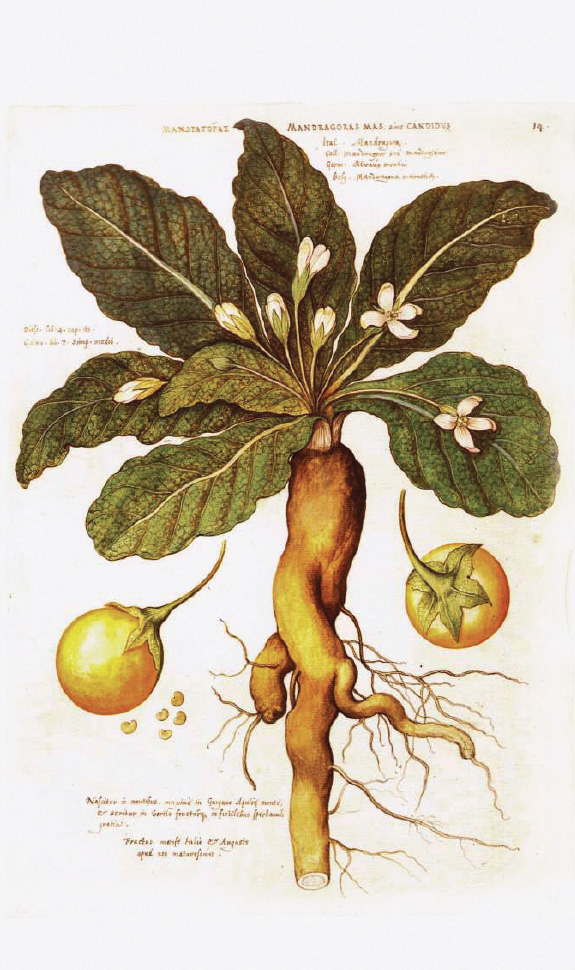
Plate 33. Mandrake (Mandragora officinarum)
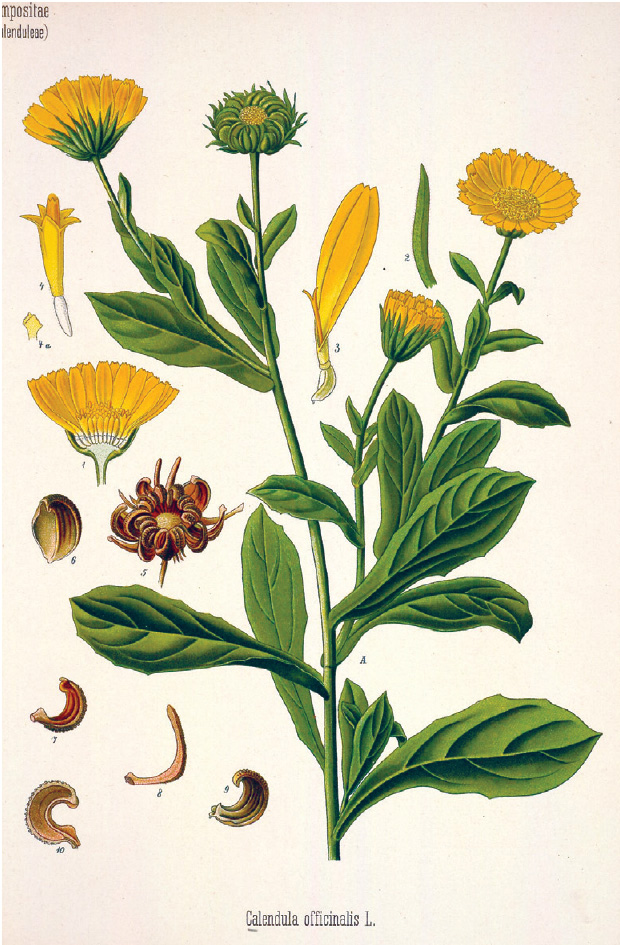
Plate 34. Marigold (Calendula officinalis)
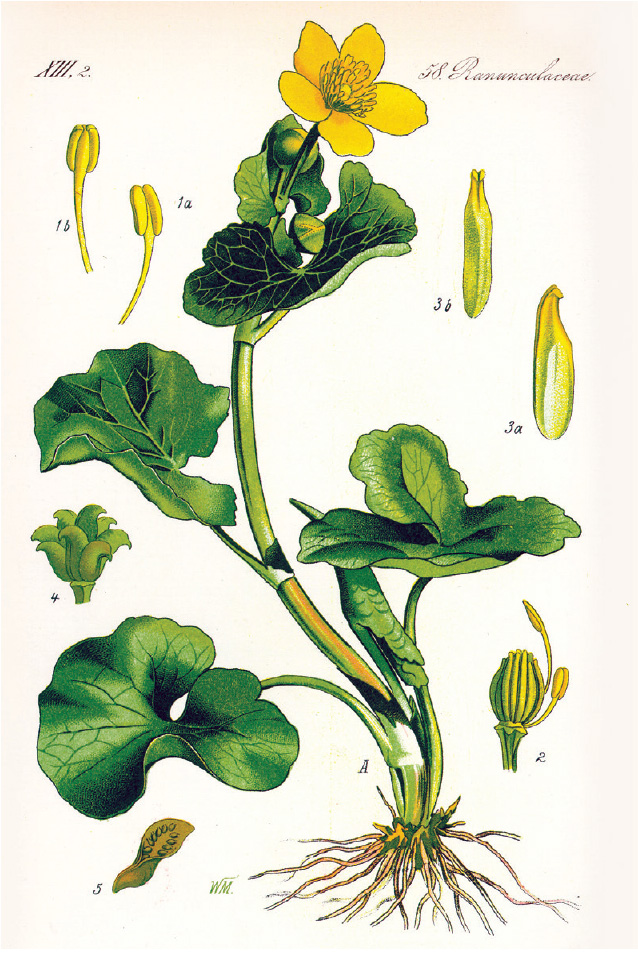
Plate 35. Marsh Marigold (Caltha palustris)
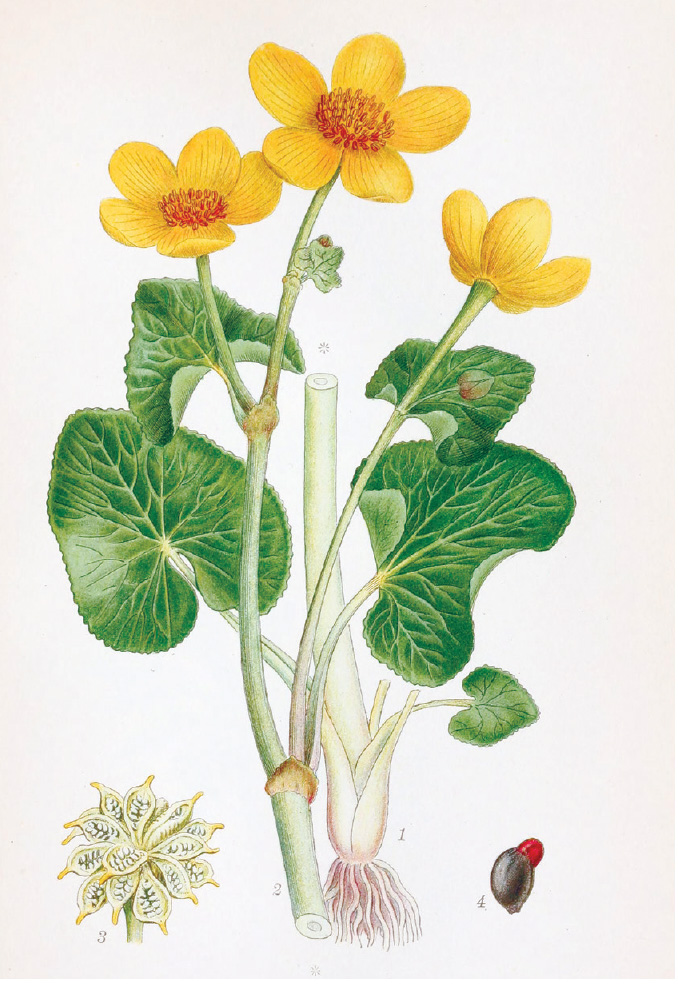
Plate 36. Marsh Marigold (Caltha palustris)
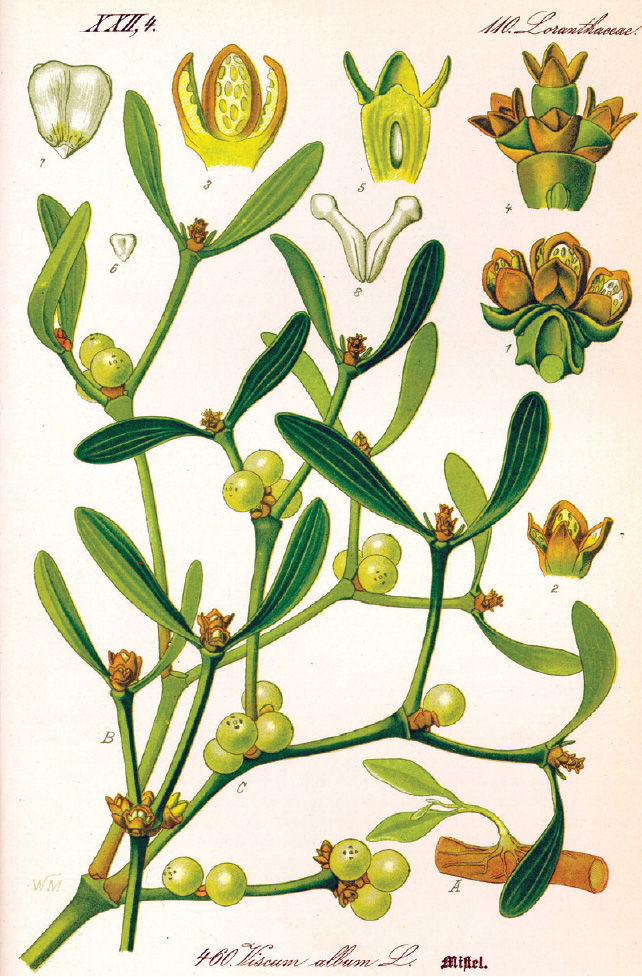
Plate 37. Mistletoe (Viscum album)
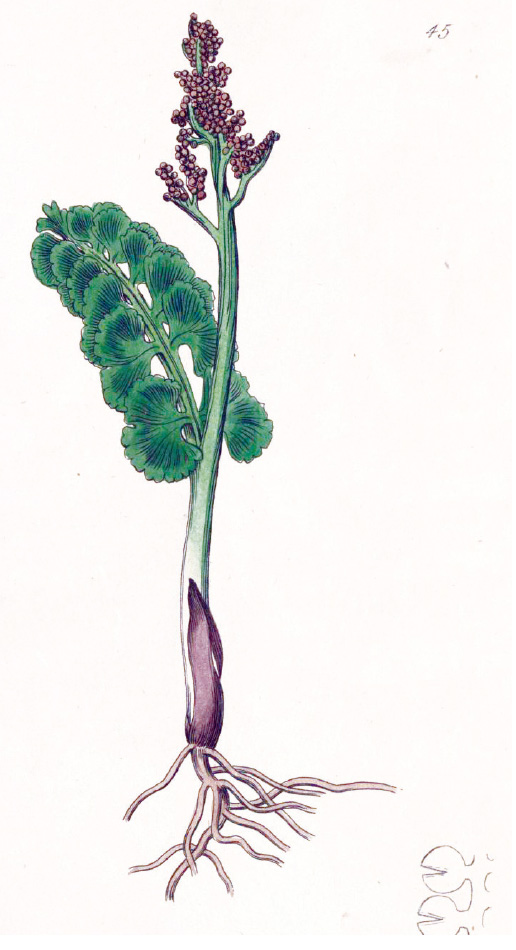
Plate 38. Moonwort (Botrychium lunaria)
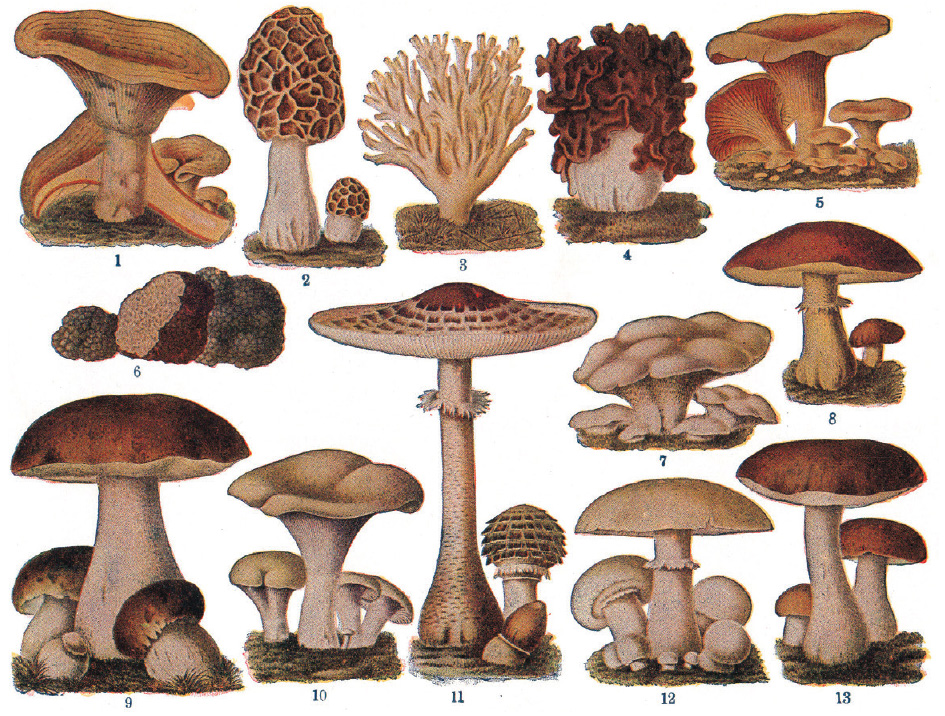
Plate 39. Mushrooms (Fungi)
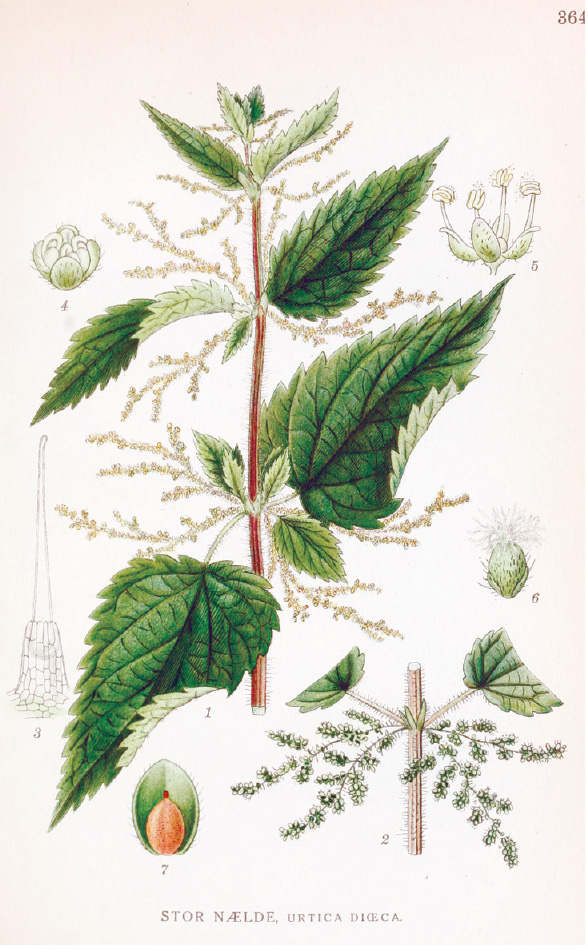
Plate 40. Nettle (Urtica dioica)
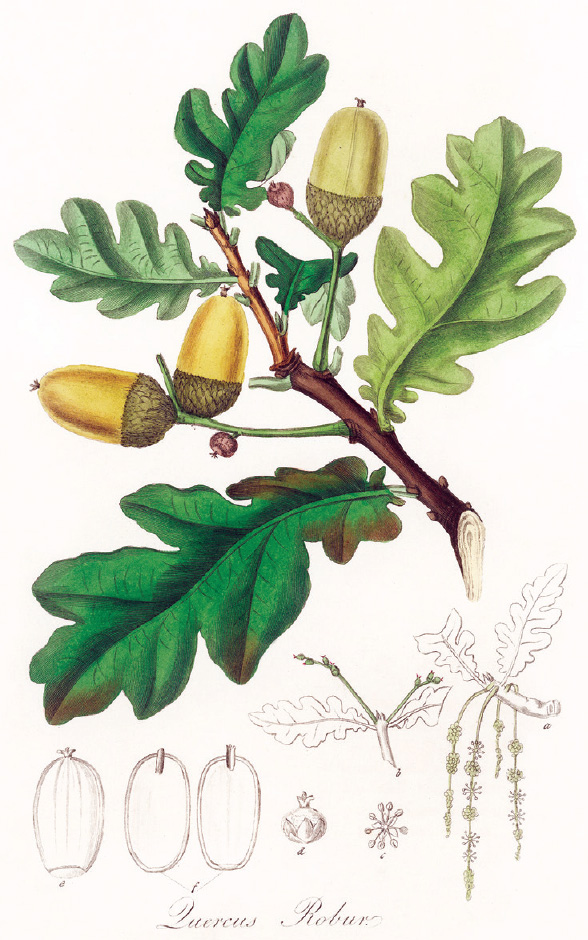
Plate 41. Oak (Quercus spp.)
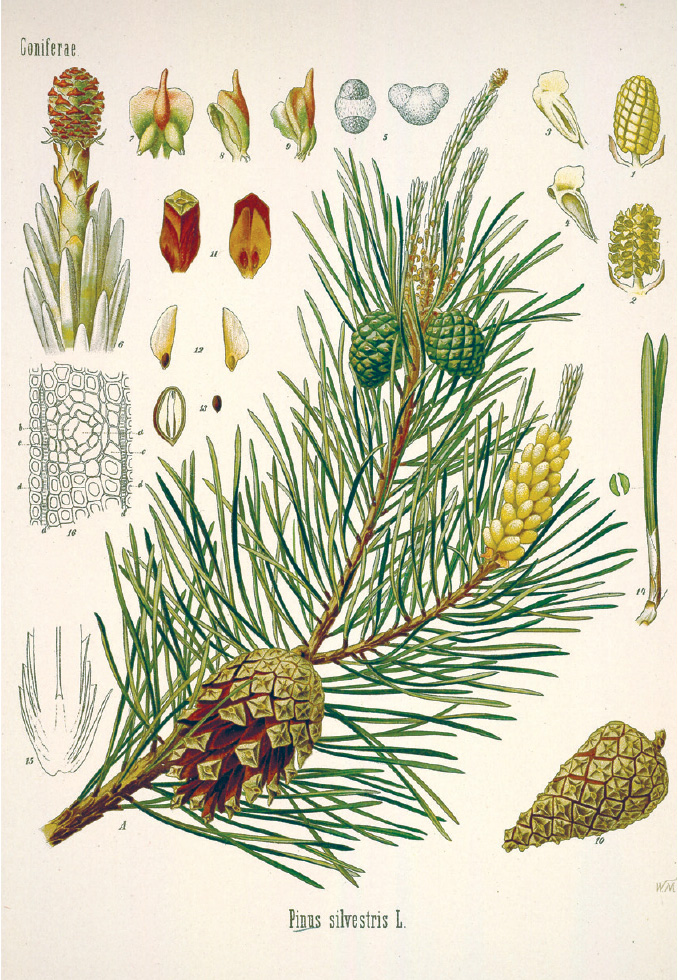
Plate 42. Pine (Pinus spp.)
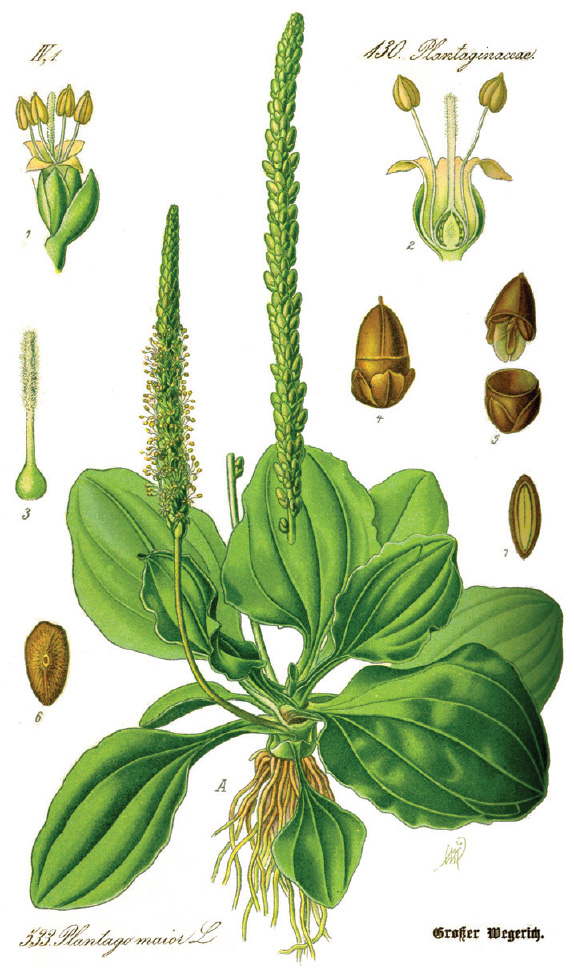
Plate 43. Plantain (Plantago spp.)
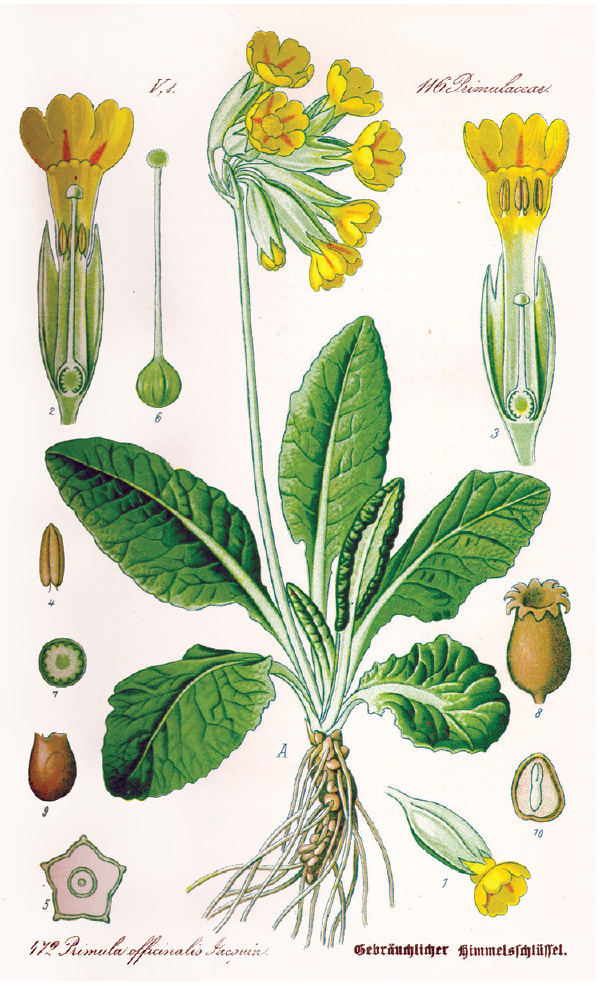
Plate 44. Primrose (Primula veris)
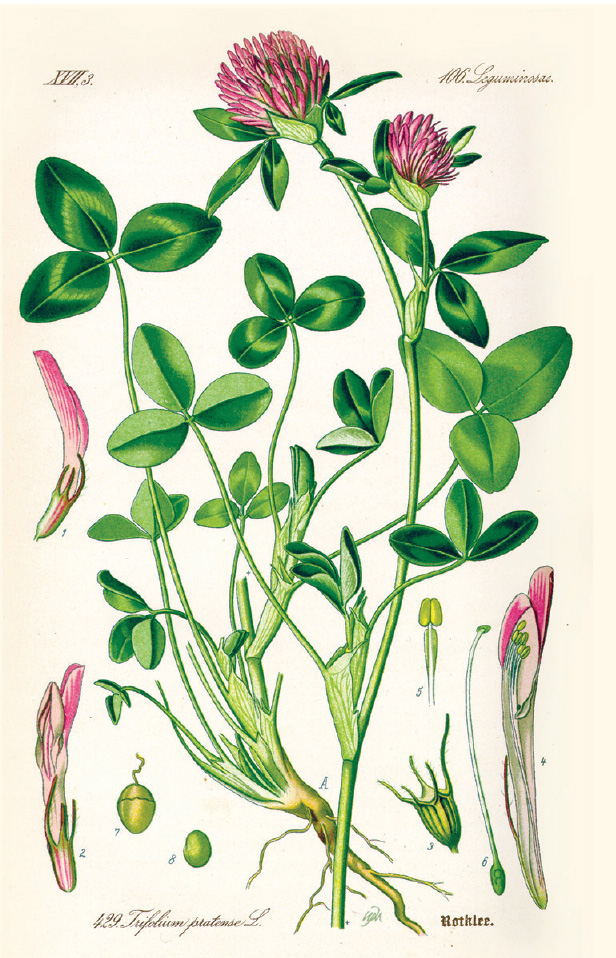
Plate 45. Red Clover (Trifolium pretense)
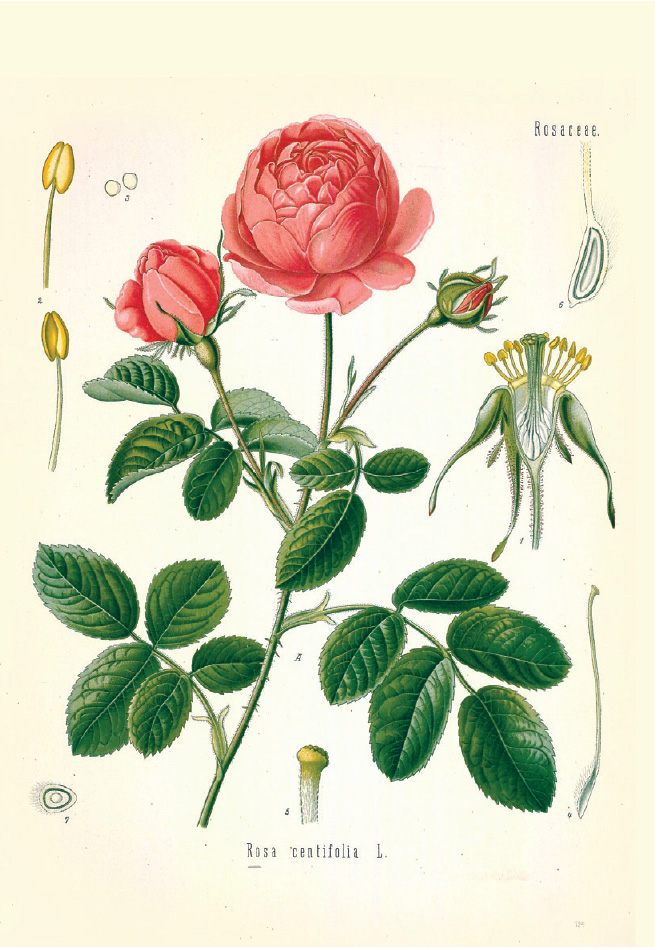
Plate 46. Rose (Rosa spp.)
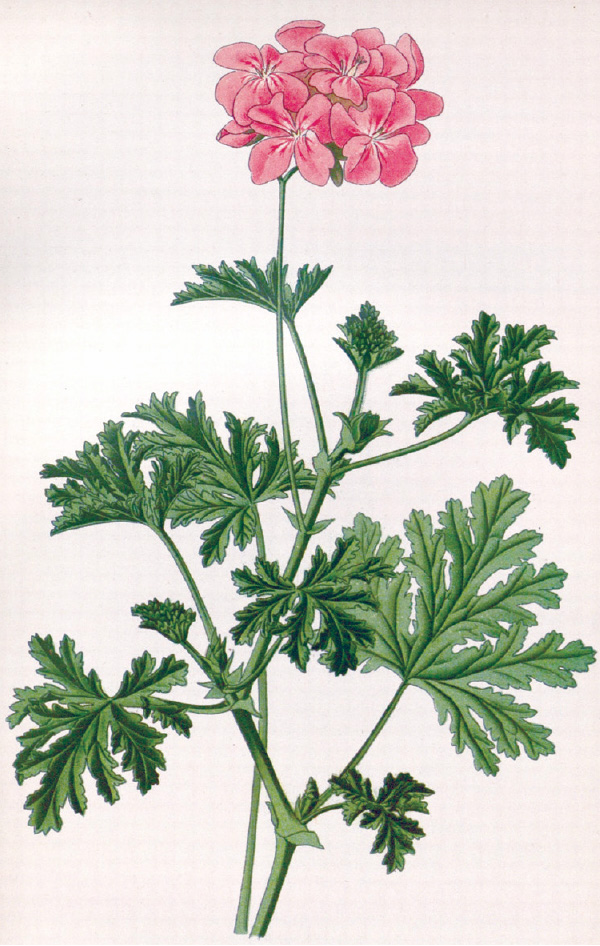
Plate 47. Rose Geranium (Pelargonium graveolens)
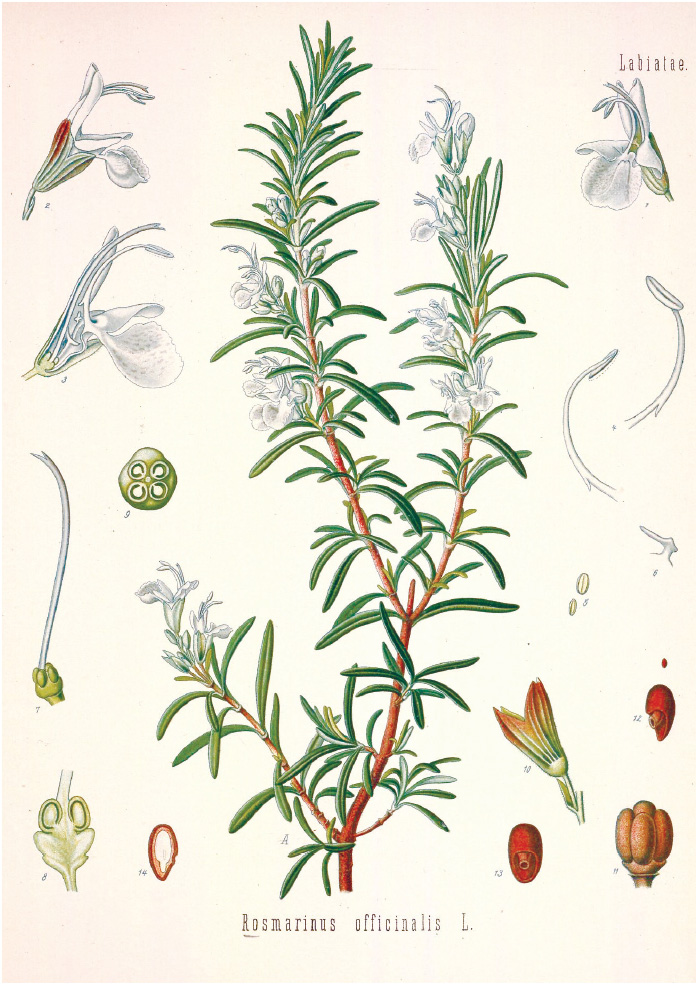
Plate 48. Rosemary (Rosmarinus officinalis)
CAUTION: Pregnant and breastfeeding women should use Rose hips as a food rather than a long-term medicine. Some people may experience nausea, vomiting, diarrhea, constipation, heartburn, stomach cramps, fatigue, headache, inability to sleep, and other symptoms if they are sensitive to this plant. Taking large amounts of Rose hips for a long time could make G6PD deficiency worse, may increase the risk of kidney stones, and might worsen iron-related disorders. Avoid Rose hips if you have sickle cell anemia or have had a heart attack or stroke. Take Rose hips 2 hours before or 4 hours after antacids because the vitamin C in the hips could increase aluminum absorption. Taking Rose hips with estrogen could increase the amount of estrogen your body absorbs. Do not take with fluphenazine (Prolixin). Use caution if you are on lithium because the vitamin C could make it hard for your body to process the salts. Rose hips could decrease the effectiveness of warfarin (Coumadin). Avoid Rose hips if you take a lot of aspirin. Taking the hips with salsalate (Disalcid) could increase the side effects of that drug.18
Rose at Beltaine
Add Rose hip tea or Rose oil to your ritual bath and float the petals in the water as you soak. Decorate a cake with fresh or candied Rose petals and float them in the ritual cup. Sprinkle Rose petals and flowers on the altar to honor Venus/Aphrodite and to attract love and luck.
Rose Geranium (Pelargonium graveolens)
Sweet-Scented Geranium (Pelargonium luridum)
Pelargonium luridum, a variety of Rose Geranium with night-scented flowers, is used during Zulu courtship rituals in South Africa. During courtship young Zulu men rub a mixture of the root powder and the fat of hippopotamus or python on their faces to attract the ladies.
Rose Geranium is a plant that can be easily grown on your kitchen windowsill or by the doorway to keep noxious energies and persons away. For magical purposes it may be used as a substitute for Rose. Keep it around for those times when you need to increase love in your life. Red Geranium flowers are added to spells for lust and passion, while pink Geranium petals are put into spells for love. Add the flowers and leaves to oils and philters or float them in your ritual bath to attract a lover.
Kitchen Witches can get creative with this herb to further their magical intent. Place the fresh leaves of Sweet-Scented Geranium (Pelargonium graveolens) in a jar and layer them with sugar. Keep the jar in a cool, dark place for about 8 weeks, sift out the leaves, and you will have a bewitchingly scented sweetener to enhance your love life.
Or warm a jar of Apple jelly in a bain-marie or double boiler until the jelly melts. Place fresh Rose Geranium leaves into a clean jar and pour the liquefied jelly over them. Refrigerate for 3 days, then remove the leaves. (You can do the same thing with fragrant red Rose petals.)
If you place a few fresh Rose Geranium leaves in the bottom of a cake pan when making pound cake or a simple yellow cake, the floral scent of the leaves will permeate through the cake. The leaves are edible and impart a delicate rose-orange perfume to compotes, custards, cakes, and salad dressings.
The edible flowers can be sugared and used to decorate cakes and cupcakes or frozen into ice cubes for ritual drinks. Add a drop or two of food-grade Rose Geranium oil to cake icing.
Medicinally, the leaves and flowers of Rose Geranium used as a tea have relaxing, antistress, and antidepressant effects that help with female discomforts related to PMS and menopause. The tea can also be used to treat nausea and poor digestion, tonsillitis, and a lack of circulation, as well as headaches (including migraine), joint pains, colds, and flu. The tea is detoxifying to the kidneys and slightly diuretic. Add Mint for extra flavor and to treat stomach and digestive problems. To make the leaf tea: Steep 4 to 5 fresh leaves and flowers in a cup of freshly boiled water for about 10 minutes. Take ¼ cup, four times a day, for no more than 2 to 3 days.
For external use, the leaf and flower tea makes a wash or fomentation for acne, hemorrhoids, eczema, bruises, ringworm, and lice, and a face wash or hair rinse to correct the PH of the scalp and skin. The root tea makes a wash for sores, bleeding wounds, and burns.19 To make the root tea: Simmer 2 teaspoons of root per cup of water for 20 minutes. You can also mash Rose Geranium roots to make a poultice for arthritic joints, sore feet, and hemorrhoids.
Rose Geranium oil has healing properties too. Put a few drops in water, soak a cloth in the mixture, and apply it to the skin or put the oil into an infuser and inhale it to calm heart rate and stress levels, improve breathing, lower blood pressure, and strengthen the immune system.
The oil is anti-inflammatory and antiseptic and can be used for pain, acne, burns, frostbite, athlete’s foot, eczema, and hemorrhoids. It is astringent to the gums, muscles, intestines, skin, blood vessels, and tissues and is antibacterial and antifungal for wounds. Always dilute the oil by placing a drop or two in ¼ cup of water before applying it to the skin.
Use it in massage oils, but do not apply the oil directly to the skin. Dilute it with a carrier oil such as jojoba, olive, or sweet almond. Do not use the oil on young children or babies.
CAUTION: Rose Geranium is safe when used as a food additive. Pregnant and breastfeeding women should only take small amounts of the tea for a short period of time, and they should probably avoid the oil altogether. Some individuals have experienced increased sensitivity, eye irritation, rashes, or a burning sensation with the oil. The oil is too strong for infants and very young children.20
Rose Geranium at Beltaine
Spread the flowers and leaves on your bath water along with a few drops of the oil or a tea to attract love and passion. Float the flowers in the ritual cup. Bake a cake with 5 Rose Geranium leaves placed in the bottom of the pan and decorate it with the fresh flowers.
Rosemary
(Rosemarinus officinalis)
The Goddess Venus/Aphrodite was born from sea foam and drifted to land riding on a sea shell. Rosemarinus means “dew of the sea.” This “dew” was the blood and semen of castrated Neptune/Poseidon, which impregnated the waves, causing Venus/Aphrodite to be born on a beach on the Isle of Cyprus. Naiads (water nymphs) draped her naked body in Rosemary and Myrtle as she came ashore.
Rosemary flourishes along the dry Mediterranean coast, where it is moistened by the damp sea breezes. The association of this herb with Venus/Aphrodite means it has aphrodisiac and fertility-enhancing properties. Use it in spells, oils, and philters for fertility, love, and lust.21
For more on the lore, history, uses, and Beltaine practices of Rosemary, see here.
Saint John’s Wort
(Hypericum perforatum, Hypericum pulchrum, Hypericum humifusum, Hypericum elodes, Hypericum tetrapterum)
In Germany and England, Saint John’s Wort was once used for marriage divination. A young woman would go out at night and pick the herb. If it was fresh in the morning a marriage was likely, but if the flowers were wilted her chances were slim.
The young maid stole through the cottage door,
And blushed as she sought the plant of power.
“Thou silver glow-worm, oh! lend me thy light,
I must gather the mystic St. John’s Wort to-night;
The wonderful herb whose leaf will decide
If the coming year shall see me a bride.”22
For more on the lore, history, uses, and Beltaine practices of Saint John’s Wort, see here.
Strawberry (Fragaria spp.)
Woodland Strawberry (Fragaria vesca)
Strawberries are the fruits of love in many cultures. Following is a Cherokee story of how Strawberries were first created.
When the first man was created and a mate was given to him, they lived together very happily for a time, but then began to quarrel, until at last the woman left her husband and started off toward Nûñdâgûñ´yĭ, the Sun land, in the east. The man followed alone and grieving, but the woman kept on steadily ahead and never looked behind, until Une´‘lănûñ´hĭ, the great Apportioner (the Sun), took pity on him and asked him if he was still angry with his wife. He said he was not, and Une´‘lănûñ´hĭ then asked him if he would like to have her back again, to which he eagerly answered yes.
So Une´‘lănûñ´hĭ caused a patch of the finest ripe huckleberries to spring up along the path in front of the woman, but she passed by without paying any attention to them. Farther on he put a clump of blackberries, but these also she refused to notice. Other fruits, one, two, and three, and then some trees covered with beautiful red service berries, were placed beside the path to tempt her, but she still went on until suddenly she saw in front a patch of large ripe strawberries, the first ever known. She stooped to gather a few to eat, and as she picked them, she chanced to turn her face to the west, and at once the memory of her husband came back to her and she found herself unable to go on. She sat down, but the longer she waited the stronger became her desire for her husband, and at last she gathered a bunch of the finest berries and started back along the path to give them to him. He met her kindly and they went home together.23
The Strawberry is sacred to Venus/Aphrodite because it is heart-shaped and red. There is a folk custom in Bavaria where each spring tiny baskets of wild Strawberries are tied to the horns of cattle. These baskets are a gift for the Elves who adore Strawberries, and they will hopefully return the favor by ensuring healthy calves and abundant milk.24
Following are some ways Kitchen Witches can enjoy Strawberries.
Plop them into glasses of champagne.
Make a parfait with alternating layers of fresh, sliced Strawberries; granola; and yogurt.
Top shortcake or pound cake slices with lemon curd or chocolate syrup, fresh Strawberries, and whipped cream.
Put a block of natural vanilla ice cream made with real vanilla bean into a large bowl and spread freshly sliced Strawberries and whipped cream over the top. Garnish with bruised, fresh Mint leaves.
Cut a pound cake into small cubes and drizzle orange liqueur over the sections. In a large glass bowl layer the soaked cake with vanilla pudding and Strawberries. Just before serving smother with whipped cream.
Combine 2 cups sour cream and ½ cup brown sugar and use it as a dip for fresh Strawberries or dip them in powdered organic sugar or orange liqueur and powdered organic sugar.25
According to the ancient doctrine of signatures, herbs and foods tell us for which organ in the body they are helpful. They do this by the color of stems, leaves, fruits, and flowers; the scent of the plant; the texture of the leaves; where it grows; and other indications. Isn’t it fascinating that Strawberries look like a heart?
Strawberries are rich in fiber and potassium, which benefits heart health, and anthocyanins, a class of flavonoids found in Strawberries, have been shown to lower the risk of heart attacks. To gain this benefit, eat at least three servings a week. Quercetin, also found in Strawberries, is a powerful anti-inflammatory that appears to reduce the risk of atherosclerosis and the damaging effects of LDL cholesterol. The high antiinflammatory polyphenol content in Strawberries can reduce the risk of cardiovascular disease by preventing platelet buildup and reducing blood pressure. Strawberries help to lower the levels of homocysteine, an amino acid in the blood that damages the inner lining of arteries.
All of these qualities also make Strawberries effective for reducing the risk of stroke, inhibiting tumor formation, and decreasing inflammation in the body. Strawberries have a low glycemic index, making them a valuable food for diabetics. Eating about thirty-seven Strawberries a day can stave off diabetic complications such as kidney disease and neuropathy.
Strawberries are also a good source of folic acid, which is needed by pregnant women to prevent birth defects, and vitamin C (1 cup of Strawberries has 160 percent of the daily recommended dose).26 They also contain malic acid, which can help whiten your teeth. Rub them directly onto your teeth or mash and combine them with a little baking soda and use the mixture as a dentifrice.
CAUTION: You should buy organic Strawberries whenever possible, because otherwise they are one of the most pesticide-laden fruits. People with kidney disease and those on beta-blockers or diuretics should use caution with this fruit. Pregnant and breastfeeding women should eat only food amounts. Eating a lot of Strawberries might worsen bleeding disorders and slow blood clotting. Stop eating large amounts 2 weeks before surgery.27
Strawberries at Beltaine
Instead of serving cakes with wine at the end of your Beltaine rite, why not serve Strawberries and a melted chocolate dipping sauce? Or eat Strawberries during the ritual to honor Venus/Aphrodite and other love Goddesses? Be sure to leave out a small offering of Strawberries for the Elves.
Thyme, Garden Thyme (Thymus vulgaris),
Wild Thyme (Thymus serpyllum)
The following love divination ritual dates back to at least 1685, when it was first recorded.
Young men or maids may do onely this; Take some rose-marry flowers, and some bay leaves, a little thyme, sweet marjoram and sidder wood;*67 make these into powder, and with a little barley flour make a cake, but do not bake it. Lay this under your head any Friday night, and if you dream of musick, you will marry those you desire in a little time; if of the sea or ships, you will travel first. If of a church, you must be contented to die single.28
See here for more on the lore, history, uses, and Beltaine practices of Thyme.
Violets
(Viola spp.)
According to Finnish belief Violets have magical powers to attract true love. Wear them, or their scent, to find a new lover. The Finns also find Violets to be a favorite of the Fairies, a comfort to the lovesick, and protection from evil Spirits.29 The ancient Persians and Greeks used an infusion of Violets in hot water to heal a broken heart.30
According to legend it was the Goddess Venus/Aphrodite who made the Violets blue. Arguing with her son Eros/Cupid over who was more beautiful, herself or a group of younger maidens, Eros/Cupid favored the maidens. At that Venus/Aphrodite grew vengeful and beat her younger competitors until they turned blue and then transformed into Violets.
The association with Venus/Aphrodite made Violets a popular love potion and aphrodisiac,31 and Violets are used in love charms to this day. Wear Violets to reunite with your lover. To attract a new lover or romantic partner, make a strong Violet tea, add milk, and wash your face in it or place the leaves or flowers in your shoes.32
Violets are symbols of serenity, peace, modesty, and simplicity, and they bring good luck to women when used as a scented oil or eaten. To dream of Violets means your luck is improving, but if your Violets start blooming in the fall that can presage bad luck, sickness, or even death, according to British tradition. It is unlucky to see only a few Violets, but it means great good fortune to see many.33
The first Violet you find in the spring will be a powerful charm to wish upon but be wary. Some say that Violets are so beloved by the Fairies that bringing one into the house will cause the Fairies to follow you inside. They claim it is best to only work with them magically out of doors and then leave them outside with an offering of cream before you go back into the house.
Kitchen Witches can make a flower tea with Violet flowers, Rose petals (use the old-fashioned Tea Roses that have a strong smell), Pansy (Heartsease, Johnny-Jump-Ups) and Lavender flowers. Steep for just a few minutes to keep the flower bouquet scent. Add a bit of Lemon Balm and a drip of honey.
Violet flowers can also be made into a Violet vinegar (see recipe below), which can be used in salads, applied with a cotton ball to bee and wasp stings, made into a skin-soothing bath or foot bath, diluted with water for a cooling sunburn treatment, and applied as a hair rinse for dandruff and itchy scalp after shampooing (do not rinse out).
 Violet Vinegar*68
Violet Vinegar*68
Fill a clean glass jar about half full of Violet flowers.
Pour organic vinegar over them and cap with a plastic lid or cover with plastic wrap and then screw on a metal cap (vinegar corrodes metal).
Allow to steep for up to 2 weeks in a cool, dark place. Strain and keep for up to 1 year.
To use Violets medicinally, incorporate the fresh (or frozen) leaves and flowers into poultices to shrink tumors on the skin, breasts, and lymph glands and cancers of the colon, tongue, and throat. Use the fresh leaves in wound salves and ointments, or simmer the whole herb in goat’s milk to make a wash that improves the complexion.
The tea of Sweet Violet (Viola odorata) leaves benefits headaches and mucous conditions and makes an effective gargle for sore throats and mouth sores. To make the leaf tea: Steep 1 teaspoon of leaves per ½ cup of freshly boiled water for 20 minutes. Take ¼ cup, four times a day, between meals.
A tea of the roots, leaves, and flowers helps coughs, bronchitis, asthma, emphysema, “dust-damaged” lungs, insomnia, and nervous conditions. To make the tea: Simmer 2 teaspoons roots per cup of water for 20 minutes, remove from the flame, and while still hot steep 2 teaspoons leaves and flowers per cup of water in the same liquid for 20 minutes. Take ¼ cup, four times a day, between meals.
The leaf tincture is used to detoxify the lymph glands. To make the tincture: Follow the instructions in “How to Make a Tincture”. Take 20 drops in water or tea, several times a day, between meals.
Sweet Violet is added to combination remedies to treat incontinence in older people, bed-wetting, irritable bladder, and prostate conditions.
The flowers are slightly laxative, and a flower syrup (see recipe below) can be taken for fever, epilepsy, insomnia, jaundice, sore throats, and headaches.
 Violet Flower Syrup
Violet Flower Syrup
Pour boiling water over the flowers, however many you have, until they are barely covered. Allow to steep for 10 hours. Strain and then reheat the liquid.
Repeat the process, pouring the same hot liquid over another pot of flowers. Steep for another 10 hours. Do this again several more times. Once you have simmered the liquid for one last time, remove from the heat and add local raw honey until a syrup consistency is achieved.
CAUTION: Violets are usually nontoxic when taken as a food, but just to be safe, those who are pregnant or breastfeeding should avoid internal medicinal doses.34
Violets at Beltaine
Place fresh or candied Violet flowers on cakes and cupcakes for the Beltaine feast. Float the flowers in the ritual cup or on other libations. Freeze the flowers into ice cubes for drinks. Sprinkle the flowers onto a bowl of cream and honey and leave it out as a gift for the Fairies.
White Bryony, False Mandrake, English Mandrake, Wild Hop
(Bryonia alba)
White Bryony, sometimes used as a substitute for Mandrake since the two have similar magical qualities, has mystical powers to increase fertility and attract money as is described by W. H. Barrett in Enid Porter’s Cambridgeshire Customs and Folklore.
Old Fen men digging up roots, selecting those most human in shape washing them carefully and putting in their marks—few of the older generation could read or write. On their visits to the local inn the men took their roots to join others arranged on the taproom mantleshelf ready to be judged in a competition for which entrant paid a small fee. On Saturday night the landlord’s wife would be called in to judge the exhibits, a prize being awarded to the root which most resembled the female figure. . . . After the prize had been awarded the winning root stayed on the shelf until it was ousted by a finer specimen. Even then it was not discarded, for if it was suspended by the string from the rafters of a sow’s stye it was reckoned that more piglets would be produced. When the root was dry and shrivelled it was placed among the savings kept in an old stocking hidden under the mattress as a guarantee that the hoard would increase.35
For more on the lore, history, uses, and Beltaine practices of White Bryony, see here.
Yarrow
(Achillea millefolium)
In Finnish tradition pink Yarrow is added to magical bouquets to attract romantic love.36 Pick Yarrow and sew it into a little pink (for love) or red (for passion) sachet and place it under your pillow. Yarrow is best picked from the grave of a young man (if you are a woman) or that of a deceased maiden (if you are a man) at the full moon for this purpose.
Recite the following verse to dream of your future lover.
Thou pretty herb of Venus tree
Thy true name be Yarrow
Now who my bosom friend must be
Pray tell thou me tomorrow.
TRADITIONAL ENGLISH CHARM
Yarrow is a traditional emblem of fidelity. Incorporate it into the marriage bouquet and boutonniere or hang it over the marriage bed. Put young Yarrow leaves in the wedding salad and float the flowers in the wedding punch.37
For more on the history, lore, uses, and Beltaine practices of Yarrow, see here.
Yellow Dock, Curly Dock
(Rumex crispus)
Dock leaf is an old remedy for Nettle and bee stings as the following English rhymes attest.
In dock, out nettle,
Don’t let the blood settle.
And
Dock, dock, shall have a smock,
Nettle shall ne’er have one.
Dock is used to cut bindings and clear blockages and to draw in money and attract love. It is often known as Yellow Dock because of the color of its roots. Yellow, of course, is the color of gold, so make a strong tea of the root and use it as a wash for the doorknobs at your place of business to attract customers and for your home to increase wealth and bring in good luck.
Yellow Dock was used medicinally in Ireland by squeezing out the juice of the leaves and applying the juice to a cloth, which was wrapped around a bruise on the bottom of the foot caused by walking on a stone. The root tea was taken for constipation and liver problems, skin diseases, and rheumatic pains.38
Once again the ancient doctrine of signatures applies here. The yellow roots of Dock make a yellow tea. The liver produces yellow bile, and plants with yellow roots or flowers (Dandelion, Goldenseal, Barberry) are often liver remedies. Yellow Dock is indeed cleansing to the liver and by extension the blood, making it an ideal herb for skin eruptions. To make the tea: Simmer 1 teaspoon of chopped root per cup of water for 20 minutes. Take up to 2 cups a day in ¼-cup doses for up to 2 weeks.
Yellow Dock is rich in iron, and it is also a laxative, making it ideal for pregnant women with constipation. But they should use it sparingly and only when needed.
Externally Yellow Dock is used in salves and ointments for itchy skin conditions, sores, swellings, and scabs. You can also rub the fresh leaf itself on Nettle rash and insect bites,39 and use the pounded root to poultice cuts.40
CAUTION: Never use Yellow Dock raw; it must be cooked. Overuse can cause diarrhea, nausea and cramps, increased urination, skin irritation, low blood levels of potassium and calcium, vomiting, heart and breathing problems, or death. Some individuals may experience contact dermatitis from handling the raw root. It can exacerbate blood clotting so avoid it if you have a clotting disorder. Those with a Ragweed allergy might react to this plant. Intestinal blockage, stomach ulcers, and kidney disease are contraindications for its use. Do not use it if you are on laxatives, diuretics, or warfarin. Women who are breastfeeding should not take it, as the laxative effects could be transferred to the baby.41
Yellow Dock at Beltaine
Wash the doorknobs of your house or place of business with Yellow Dock root tea and sprinkle the tea around the ritual circle to attract wealth, love, and good luck.